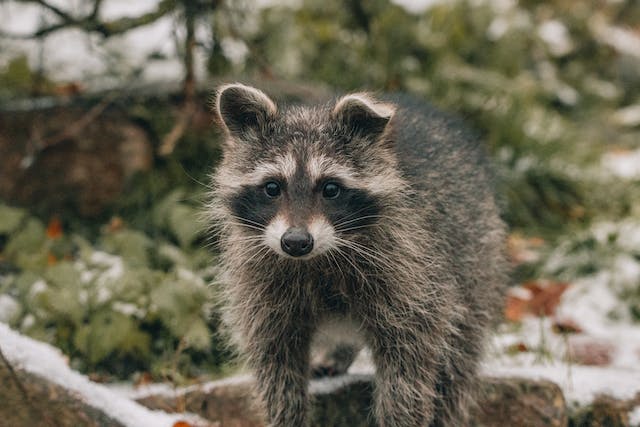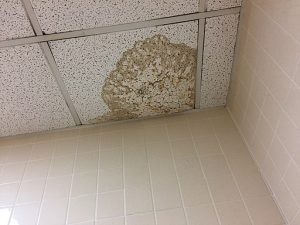As the weather shifts, outdoor creatures attempt to enter your home in hopes of maintaining their body temperature and finding food. Among the many animals that can easily find their way into homes are mice, squirrels, raccoons, deer, and skunks. Once they’ve established themselves, it can be challenging to remove them.
Chemical pesticides are widely available. However, they have several hazardous effects on the natural world and human health. Exposure to chemicals is associated with respiratory and neurological symptoms, hormonal imbalances, and weakened immune systems in young children.
These substances pollute the air, water, and soil, harm non-target species, and hurt regional ecosystems and sensitive food chain balances.
While wildlife can be inconvenient, nothing beats using natural animal control methods to safeguard the environment and yourself. Here are a few non-chemical methods for discouraging and getting rid of pest animals in your residence.
Table of Contents
Identify Your Animal Guest
Recognizing your furry visitors is essential to preventing harmful animals from entering your garden. While keeping a watchful eye out is the best way to do this (if deer are your primary problem, for example, you’ll probably see them in action), some animals, like moles, are tricky to spot in the act.
To locate these subterranean inhabitants, look for tunnels or dirt mounds; ants leave smaller heaps behind.
Some animals, such as squirrels and chipmunks, tend to gravitate to gardens (observe their nibble marks on leaves and other greenery). However, flying pests, such as some bird species, cause more structural damage (they peck at garden fixtures and dig holes while collecting worms).
Once you identify the invading animal, you can determine techniques (maybe a fence and repellents) to combine for maximum protection.
Construct a Fence
To safeguard a valuable variety, erect a barrier around your more susceptible plants and crops. To prevent underground diggers from digging, bury a metal mesh sheet some inches deep and bend it outward to form an enclosure.
These constructions can also irritate animals above ground; if deer frequent a particular area, for example, build a higher fence to secure your space.
The materials and costs of fencing can differ, so choose what works best for your garden’s size, spending limits, and the animal pest you’re trying to keep out. Fencing can be made of wood, polyester mesh, welded wire, or electrical wire.
Attract Natural Predators

You can remove unwanted wildlife in your backyard by attracting other wildlife. You can discourage garden pests and draw desirable wildlife to surrounding areas as soon as you understand your local food web.
Owls feed on rats, moles, and other small wildlife. To attract these raptors and help control the rodent population, explore erecting an owl container or building a nest structure nearby.
Snakes are very beneficial garden inhabitants because they eat mice and other small rodents, even though they are unsettling when found in the house or storage facility. You can locate snakes near woodpiles and brick walls because they enjoy warm sunlight and corners.
Declutter Your Home Interior
Another line of security against rodent and pest invasions in your property is a tidy and clutter-free environment. Finding a secret spot is something that mice and rats enjoy doing, and having more storage items nearby gives them additional areas to hide and procreate.
Consider the well-being and security of your family; clutter supports the accumulation of dust and dirt, provides safe havens for pest infestations, and fosters tripping hazards. There are various organizing techniques to consider based on the area.
Play areas and children’s rooms are ideal for buckets. They come in many colors and sizes to store things like toys, books, footwear, stuffed animals, and other random items your kids may have lying around. Make use of your creativity.
Many colors, sizes, forms, and styles are available for baskets to create a distinctive design or appearance. They are suitable in living spaces for mail or magazines, mudrooms or entrances for footwear and winter socks, and wardrobes for hats and protective gloves, dryer sheets, and detergents.
You can use shadow boxes in any part of your house. In addition to offering extra space to store little items like those lovely perfume bottles accumulating in the closet, they also serve as wall décor. It is also a creative way to add a splash of color to your wall and showcase about twenty or more nail polish containers in your bathroom.
Install Ultrasonic Devices
An ultrasonic device is the solution if you’re curious about what to put around your yard to keep out wildlife. It functions by making noises that frighten intruding animals, encouraging them to stay away from your plants. You only need to place it in the ground and be done.
However, there are a few considerations when choosing one of these tools.
Calculate the size of your yard. Since many ultrasonic repellents are effective within the range of 800-1200 square feet, you might need one or more to safeguard your entire yard.
Take note of the power source you prefer. Environmentally conscious buyers will choose solar-paneled gadgets, while others may desire battery-operated models. Since you must place electronic repellents near the power source and their effectiveness is space-limited, these kinds should also be among your options.
Furthermore, avoid ultrasonic repellents that irritate dogs and cats if you keep pets.
Hang Soap Bars
It may surprise you that soap bars are an excellent and straightforward way to keep squirrels, chipmunks, and rodents away.
Drive a stick into a section of soil in your yard that seeds or plants do not cover. Push it deeply enough into the soil.
Place the soap bars in a mesh bag and seal them to ensure the wood’s stability. Next, encircle the mesh bag with the rope and fasten it to the wooden stick. On the other hand, you can hold the soap bars together with a rope and hang them on a wooden stick without using the bag.
That is all. You have provided animal protection for your garden.
Realistically Keeping Pest Animals Away

Maintaining your property, including cleaning up your yard and discarding your trash, is another way to keep wildlife away. However, because wildlife plays a crucial role in preserving the ecosystem, keep only the animals seriously harming it out of the equation.
Since a garden is a flexible ecosystem, controlled animal involvement is ideal. Remember that some animals (consider birds) contribute to pollinating your yard, while others (think squirrels) eat troublesome bugs.
Although an excessive number of animal guests may cause a disturbance (particularly if they nibble your valuable flower and vegetable plants to extinction), your garden serves as the natural environment and home for these creatures.
Featured Photo by David Selbert : https://www.pexels.com




